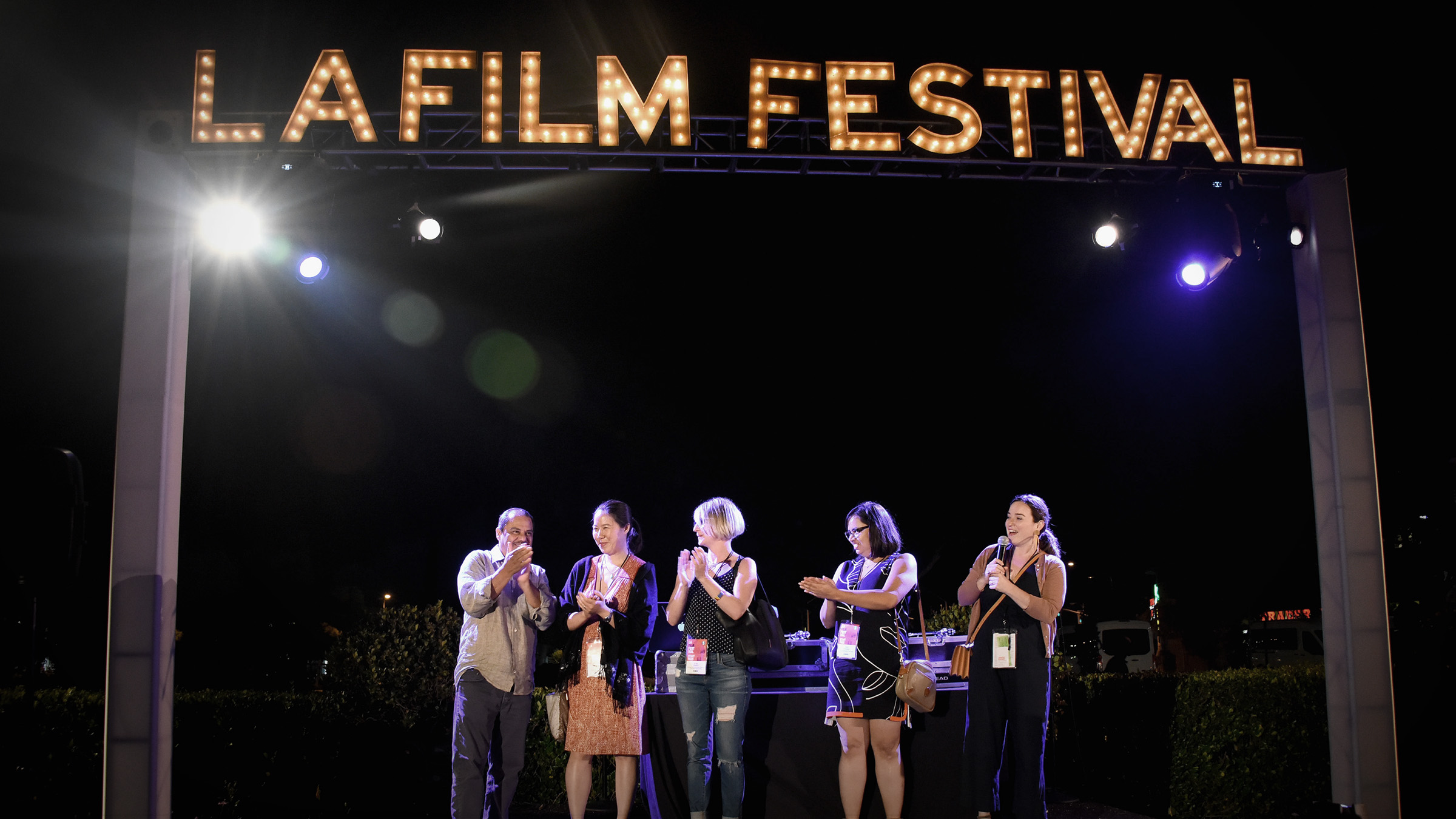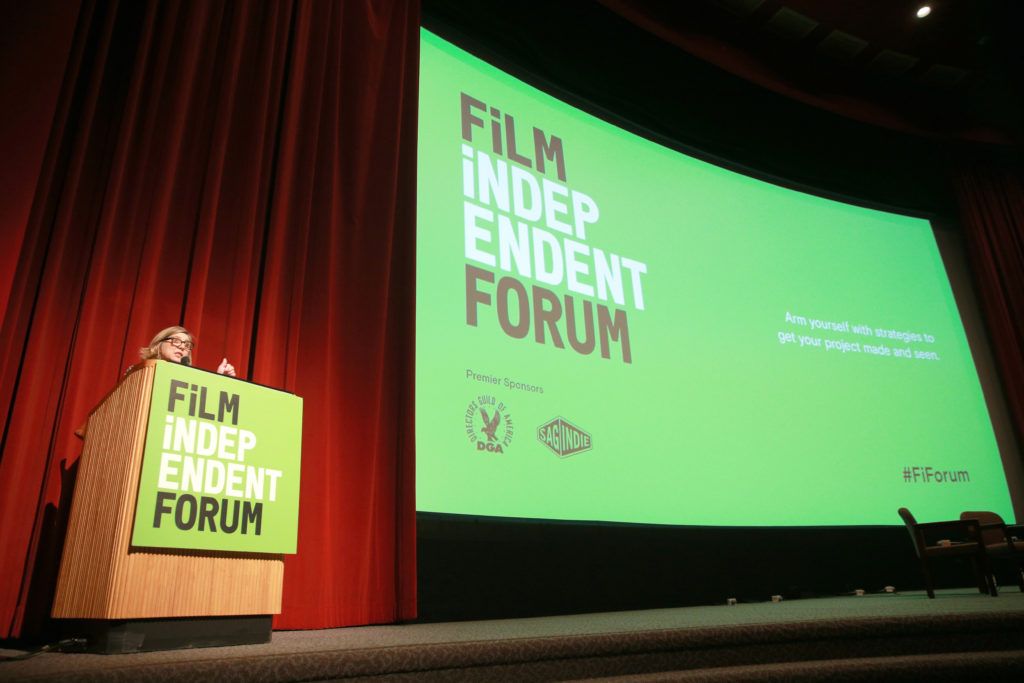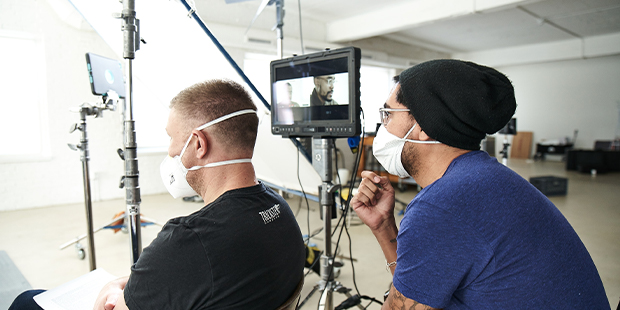An Incomplete History of Film Independent, Part Two: The Next 20 Years (2005-2024)
You can find Part One of our Incomplete History of Film Independent here.
***
In filmmaker Alexander Payne’s acclaimed 2004 wine snob dramedy Sideways–a 4x Film Independent Spirit Award winner–vino-loving schlemiel Miles Raymond (Paul Giamatti) spends a lost weekend in Southern California wine country gradually coming apart at the emotional seams. At one point, dismayed by some bad news regarding the nonpublication of his new novel and an increasingly difficult-to-ignore awareness of his own loserdom, Miles impulsively storms into the tasting room of one particularly, agonizingly corporatized McVineyard and proceeds to freak the fuck out.
It’s not stretching the metaphor here to perhaps compare the shock of Miles’ existential meltdown, then, to the mindset of the typical indie film consumer (and/or industry participant) by the time of the mid-2000s. In both instances, there was the pervading sense that true believers had been left adrift to drown in a sea of plenty.
By the dawn of President George W. Bush’s second term, the Miramax hangover of the 1990s still weighed heavily on Hollywood. Every major studio worth its stationary boasted its own “indie” shingle as art house distributors (Focus, Polygram, October) did yeoman’s box office and the money gun that was the DVD industry continued to fire from both barrels aided by healthy markups at brick-and-mortar retailers like Best Buy.
Only the very slightest, whisper-thin brushstrokes of 5G clouded the atmosphere, and nary was the day an American could walk outside and not see the word “Affliction” emblazoned in gothic scrawl above a bedazzled dragon riding high atop the breast of his countryman. So even as Freedom Coalition troops made landfall in Iraq and Afghanistan, for the film colony at least life was good. Or so it seemed.
In truth, arguments can and have been made that, by this point in its history, innovation in the indie film sphere had stagnated. That the authenticity that had animated mid-‘90s film movements like the New Queer Cinema and in the erudite slackers of Kevin Smith and Richard Linklater had been commodified and bastardized into an endless series of twee, low-effort dramedies lousy with ukulele scores and hand-drawn title fonts.
Even within the world of Film Independent so complete had the triumphs of the preceding 15 years been that the annual Venn diagram of overlap between Spirit Award and Oscar winners had become a virtual circle. But crisis was looming. Two decades’ of crisis, in fact, punctuated only by brief pit-stops of stability between major industry shakeups and wider global disaster. But with every challenge, Film Independent would rise again to meet the needs of its constituency, its community of artists, reacting proactively (in most cases) to major disruptions in creative life.
For much of the 2000s, Film Independent continued to grow its core offerings–its Artist Development labs swelling in esteem and influence. The labs’ coaching-tree tendrils reached deep into the cultural DNA of the decade, with Fellows putting their stamp not just on cinema, but increasingly on the emerging New Golden Era of Television. Each summer, the LA Film Festival gave audiences some of their very first intros to new talent, including Mr. Robot showrunner Sam Esmail, whose feature debut Comet had its world premiere at the festival in 2014, and Sean Baker, whose sophomore feature Prince of Broadway had its world premiere at LAFF in 2008.

But! The first end of an era came in 2007–the auspicious year that saw the world beset by the financial crisis, which would effectively kill off the major studio vanity shingles once and for all. 2007 was also the year that Netflix debuted its streaming video service, and the dual events would signal a new era for independent film, as would the release of Paramount and Marvel’s Iron Man a year later, in 2008.
The indie film world thus entered a period of contraction and retrenchment, and so did Film Independent, headquartered during this time in a cobweb-strewn panic room hidden behind a false bookshelf in a fluorescent dummy corridor off Pico Boulevard (it was all very Being John Malkovich). But a funny thing happened during this touch-and-go period: Film Independent’s Membership base continued to grow. And, critically for all involved, to grow outside of Los Angeles.
A fruitful broadcast partnership with IFC brought the Spirit Awards to terrestrial cable boxes and an increasingly robust blog–the very one, dear reader, your eyes dash themselves upon presently!–distilled the best of what Film Independent offered locally to those outside the city: its popular LACMA screening series, curated by Elvis Mitchell; special live events, including the ever-popular Live Reads series; educational deep-dives and hands-on filmmaker workshops; Member networking opportunities; the Directors Close-Up and Film Independent Forum; even the occasional guacamole potluck.

Such efforts to expand Film Independent’s service and sense of community were, of course, the product of many individual voices. But they bore most heavily the guitar-pick stained fingerprints of Film Independent President Josh Welsh, who years earlier had fled his Uncle Owen and Aunt Beru’s moisture farm in the wilds of Maryland for the bright lights of Hollywood, a musician and actor who first encountered Film Independent as a LAFF volunteer and simply refused to leave, eventually becoming Fi’s Director of Artist Development and, ultimately, its corner office majordomo.
Point is: by the mid-2010s, the indie film world was now adjusting to a new reality, the contraction of theatrical opportunities replaced by an ever-expanding streaming bubble whose open volcano-mouth demanded not the flesh of virgins, but rather content–and lots of it. This, coupled with the increasing technological ease of producing cinema now created a world where the struggle was not just how to make something, but how to get it recognized after it had been made.
There had been tentative steps taken toward engaging the global independent film community before in the form of one-off screening and workshops abroad, but Film Independent truly entered a new era in outreach with the inaugural Global Media Makers cohort of 2016. Presented in collaboration with the US Department of State, GMM was an unprecedented cultural exchange program that operated in two parts.
The first: a US-based residency that brought a who’s-who of emerging and established filmmakers from the Middle East to Hollywood for some serious stateside career-turbocharging. The second: a series of Film Independent filmmaker labs bringing US-based experts overseas to our Fellows’ homelands. Now celebrating its eleventh year, GMM has expanded its roster to countries in Asia and Latin America. But Global Media Makers was just one part of an explosion of international activity that brought the Fi touch far and wide, represented in a diverse slate of grassroots projects, including the free, Arab-language online film school Film Arabi.
Elsewhere in artist support during this time, Film Independent launched an extremely active Fiscal Sponsorship program and expanded its filmmaker labs into the world of episodic storytelling, with new cohorts for aspiring TV showrunners and docuseries creators. New TV categories would also soon appear at the Spirit Awards, though the debate as to what exactly constitutes “independent” in the TV business remains frothier than a free cappuccino at an Ibiza foam orgy.
So what if the LA Film Festival concluded its 23-year run in 2018? At the same time, the Spirit Awards were receiving record-high impressions, thanks to a reliable succession of buzzy masters of ceremony including Nick Kroll, John Mulaney, and Aubrey Plaza. The Film Independent arrow now seemed pointed up indefinitely, along with the fortunes of visual storytellers worldwide. But then: 2020.
As the COVID-19 pandemic pushed the world out of shared spaces and online, Film Independent once again reoriented itself around a much-changed digital landscape, reshaping its community offerings for an online world. Which, as luck (?) would have it, only solidified Fi’s value as a resource for filmmakers operating worldwide. The in-person screenings, workshops, and networking events would all return eventually, but when they did it would be as part of a new hybrid model that more closely matched how most creatives now managed their lives and careers in the modern world.

Industry contraction would again rear its ugly head in 2023, when the dual SAG-AFTRA and WGA strikes again put the brakes on an industry that just barely began to right itself following the coronavirus. As many organizations did, Fi aligned itself with creatives and developed a robust directory of support, including its own emergency relief grants.
Why? Because when something in our industry happens, Film Independent reacts in the filmmaker’s best interest, a pattern established from the organization’s very beginning, at a time when America had for the first but not last time handed re-election to populist Republican president running under the slogan “Make America Great Again”–Ronald Reagan. Corso e ricorso, c’est la vie. The more things change–
What challenges opportunities await Film Independent and the community of artists it serves in the future? AI isn’t just looming; it’s already here. Media consolidation is likely to continue–the monopolistic fantasies of Walt Disney’s frozen brain thawed and converted into Silicon Valley smart tech continually iterating new ways for video to become even more vertical than it was before.
As 2024 came to a close, we lost our beloved leader, Josh Welsh. It’s a loss that we are feeling very deeply right now, and it goes without saying that he leaves some big shoes to fill.
Through all the past 40 years, what hasn’t changed is the commitment to uplifting new, exciting and diverse voices in the film industry, which Josh embodied with every fiber of his being, and that mission won’t change going forward. The art and stories and the human beings who make it all happen will continue. And if they ask, “Who’s Film Independent?” you can tell them: I am.
[Featured Image: A few of our 2020 Project Involve Fellows (photo: Film Independent)]
A former member of the Film Independent staff, Matt Warren is a Utah-raised, Louisville-based writer, director and producer whose most recent work is the feature Delicate Arch, premiering February 2025 on Screambox. He has made numerous scripted and unscripted web series, and has worked as a film critic, entertainment journalist, humorist, editor, graphic designer and videographer. His favorite movie is Brazil, directed by Terry Gilliam.
Film Independent promotes unique independent voices by helping filmmakers create and advance new work. To support us with a donation, click here.
More Film Independent…